
 |
PLEASE PATRONIZE OUR SPONSORS!






|
|||||||
 |
|
|
Thread Tools | Display Modes |
|
#1
|
||||
|
||||
|
This weeks submission is sent to us by local member Wyatt Compton aka WCompton. Wyatt comments "The machine was built between 2001 and 2014. The finished work is almost exactly how I intended it to work out. By no means is it any sort of restoration, nor would I claim it so. It’s a resto-mod of sorts where I intended to use as many factory components from Kohler, IHC, and Cub Cadet as possible, so that while the end product was nothing that was actually produced, but it could have been. I had intended it to take on the look and stance of some of the early “wheatland” tractors that I enjoy seeing, and even at one point had designed a wheatland decal based on the 123 style decals. It’s not just a “plowing” tractor, but a PTO was added, as well as the deck lift arms left intact, so that I could use it to move snow or mow lawn." Wyatt has submitted additional comments and pictures that will be featured in the following post below. Thanks for the submission Wyatt!!!
Note: Picture is scaled down to fit here, for full resolution image simply click on the picture below  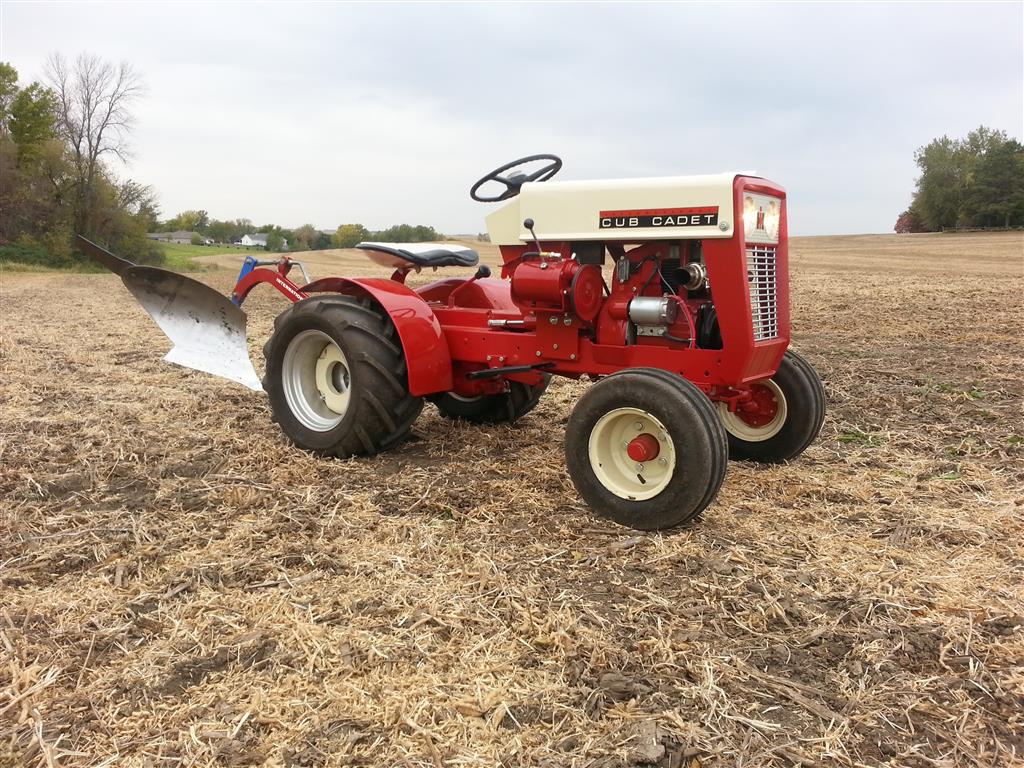
__________________
-Ryan
  |
|
#2
|
||||
|
||||
|
Wyatt has submitted additional details as well as pictures about the construction and progress of his machine. Below is just that information and pictures. Enjoy guys!
"First off, there was no specific foundation or platform, this grew from a collection of parts that I had for various Cub Cadets I owned. Much of it I purchased once I decided where I wanted the project to go. The frame is a merger of a 147 frame and a 70 frame. The frame cover is relatively easy to swap, simply drill the spot welds through on the 147 frame to remove the old cover, and on the 70 cover, I just cut the frame free from the cover, leaving only the bit of steel around the spot weld, which was ground flat. The holes drilled in the 147 frame left convenient places to plug weld the cover back on. The 147, having electric lift, needed the mounting arm removed. Luckily, the welds had much left to be desired (for looks and penetration), and was easily removed. The transmission was from the same model 70 that donated the frame cover. It was completely rebuilt, but with the exception of gears. Staying with the theme of “it could have been factory built” I needed a selection of the second gears that would have been available. Using second gears of 16, 17, and 19 teeth, along with a 4-speed gear kit from Midwest Super Cub, the gears were installed. The gears are NOT an easy fit. A few hours with a grinder was spent removing material at the front of the gearbox to make the larger gears fit on the lower shaft. Additionally, an overdrive kit (again, from Midwest Super Cub) was added. While this isn’t a factory set of parts, it does slightly reduce the torque to the top shaft of the transmission, plus makes for a little bit more useable range of gear ratios. The differential was sourced from a later model “Cyclops” Cub Cadet, along with the fine spline axles in typical fashion. One convenient thing I learned was that the press-in studs used on that generation happen to have the right diameter to cut fine thread lug bolts, the next size larger. Even though this would seem to throw a wrench in finding “stock appearing” lug bolts, some IH-stamped lug bolts were found, I believe they were from a smaller 15 series combine’s rear wheels. To top off the transmission, a hydro rear cover was added. This allowed for a half coupling to be welded in on the backside to allow for the installation of a sight plug. I’ve never liked the idea of “filling till it spills”, and in lieu of any provision for a dipstick, a sight glass (from a swather’s wobble box) suited the application. The rear fenders were widened 3” with a piece of rolled and TIG welded steel. Many hours were spent massaging the warps out of the steel so that a minimum amount of filler was needed. The inner fender panels were swapped side-to-side so that, while the fenders were widened, could be mounted at a narrower set and allow extra room for trash clearance as well as wheel weights to the inside. Narrower mounting brackets were made as well. The fenders are complimented with a wider rear track, accomplished with some off-brand x700 series all-wheel steer wheels, turned around. The wheels are intended for use with 26x12-12 tires, and make the smaller 23x10.50-12 tires appear wider. The wheels were coated in IH silver to mimic the larger series paint scheme (such as the 1206). While the wheels did come from a non-IH “brand”, the vendor they used (Titan wheel) was what IH and Cub Cadet use (though at the time would have been Electric Wheel Company or Firestone) The front axle assembly is the combination of spindles from an 1862, and the casting from a 1440. The 1862’s spindles do not sit higher than the earlier units, and the 1440 casting has an additional sweep forward for stance. Five-lug spindles were modified for width to be used with the stock 1862’s 1” spindles. Eight inch trailer wheels were painted IH white and fitted with V61 rubber. Again, the IH-stamped lug bolts from the 15 series combines were used. The Ross steering box has been rebuilt, along with receiving a 3-turn cam from another Ross steering box. It improved steering effort, though not as much as I had hoped, though near the extremes of movement, it seems to have much improvement. The grille is from a 122, the first Cub Cadet I ever owned. The grate has been re-plated, headlights added, and a decal from a 70/100, just to keep with colors that would look right together. Since I was using an engine with a stator, there was no need to mount a voltage regulator on the grille casting, so I chose to use a bracket that allowed me to mount the ignition coil up under the hood. The pedestal/dash assembly is from a 73. I’ve always liked the aesthetics of the white dash on the 73, plus since it’s removable, makes for easier service. A decal for a 73 was used, and a steering wheel for a 100 was used (with a center cap for a 982). The stock appearing ignition switch was retained, though the switch is out of a full-size tractor (1086 and the like). This allows for a keyed ignition that looks stock, while having the functionality of being able to be used with a stator and solid state regulator. The ignition switches from later model units (such as a 782 or 1450) do not fit in the switch cup. The driveline is one of the areas where aftermarket parts were used in place of stock components. There is a custom-length driveshaft to accommodate the longer K321 with a large flywheel. The throw-out bearing and clutch arm are stock. The spring is a medium-strength die spring. Due to the condensed area made for by the large flywheel engine, I had to save space (and improve design) of the infamous teaser spring. I found a package of belleville washers that allowed for smooth engagement of the clutch, while saving the almost ¼” of space that I needed to get back to make the clutch work as designed. The clutch and clutch plates are from Midwest Super Cub. I sourced through Vogel a high-strength collar to put pressure on the clutch spring. This allowed for changing the pressure of the spring, and tailoring the load so that I could balance the holding power and foot pressure required, rather than “drilling and guessing”. The adapter “puck” that went between the flywheel and the clutch driver had to be custom to allow for use of the sheave to drive the hydraulic lift. This required one of the few one-off parts to be made, so the belt could clear the grass screen and hardware. A clutch driver from Midwest Super Cub was purchased, but also needed the forward-facing side turned off to allow for belt clearance. Since the jam nuts that retained the drive pins couldn’t be used, the pins were trimmed short, high-strength threadlocker applied, and were staked into place so that no movement was allowed. The engine is from a 1450. It is ported and the deck has been pocket ported. Everything that could be stripped from the block has been stripped and replaced. The crankshaft is a stock 1450 piece with a balance plate added. The rod is from Midwest Super Cub, and a corresponding height Arias piston was also sourced from Midwest Super Cub. The crankshaft balance plate really worked out well, as the vibration with such a large rod is kept at a minimum. The camshaft is a stock reground camshaft from Vogel. The valves are of stock size, but with a 3-angle face. The carburetor is NOS from a KT17, that has been reworked by Don Vogt. The exhaust is custom built to fit in place of the stock muffler. While I don’t mind the looks of a vertical stack, I’ve always wondered about the long-term life of the welds and cracking. Having the muffler supported on both ends, while allowing for more free flow was my goal. I sourced my own 7 gauge stainless flange, and then bought components through Columbia River Mandrel Bending and Cone Engineering. The baffle is a trimmed-down Cycle Shack baffle with glass packing. The exhaust outlet has a 2” stainless v-band clamp that allows the baffle and packing to be removed. This also allows for the termination to be changed out (if I choose a vertical pipe) at a future date, without having to rebuild the whole muffler again. Since I had a combination of parts that did not all come on one unit, I had to come up with my own wire harness. Packard 56 connectors, and loom were sourced through Waytek Inc. They sell all of the components that would be necessary to reproduce the stock (or stock appearing) harness. All of the paint is CaseIH Iron Gard paint, using Five Star synthetic hardener, and PPG enamel reducer. All in all, this was quite an enjoyable project. Spanning 13 years, it had taken much longer than I anticipated, but has been every much as fulfilling to complete as I had wanted." 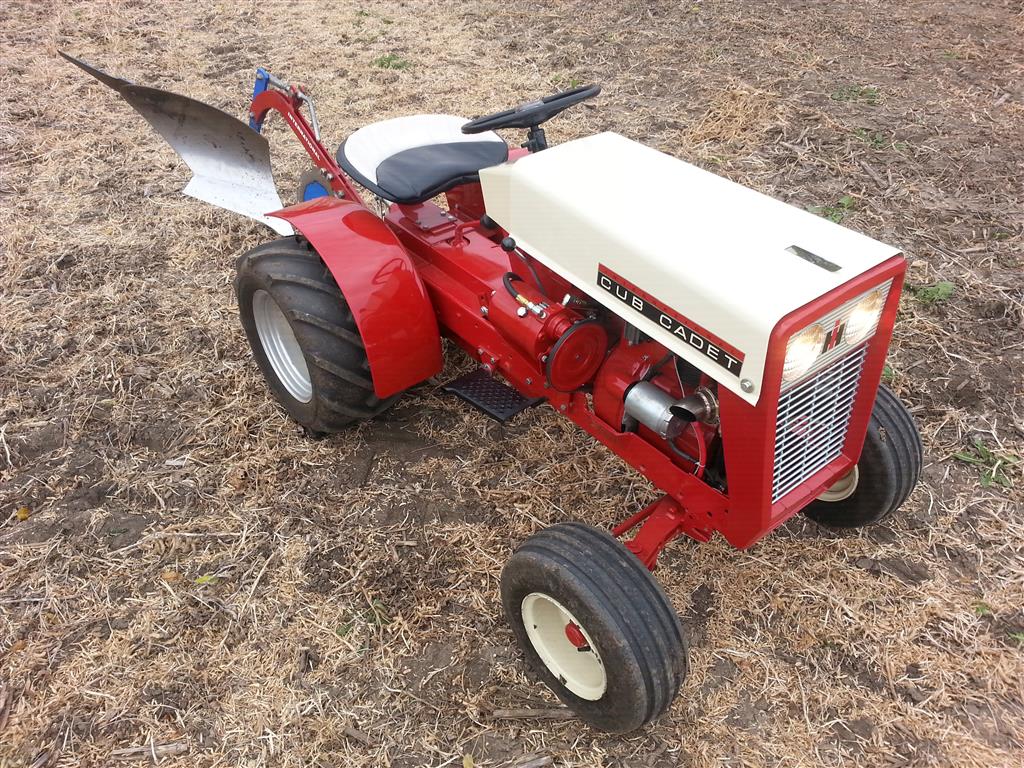 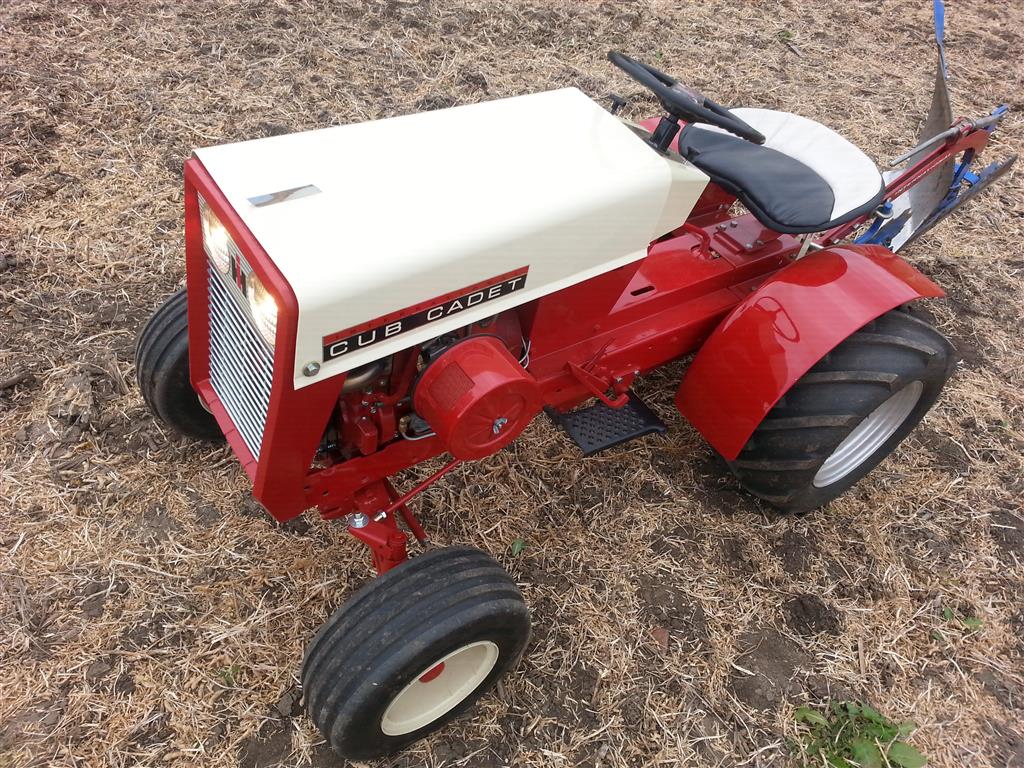 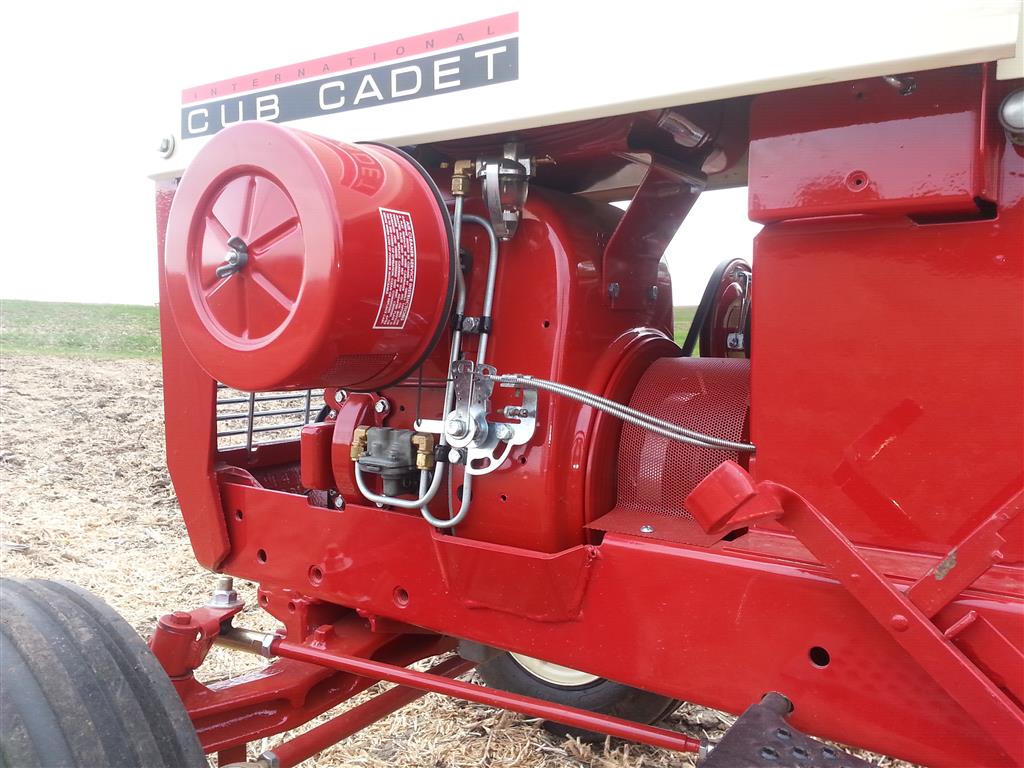 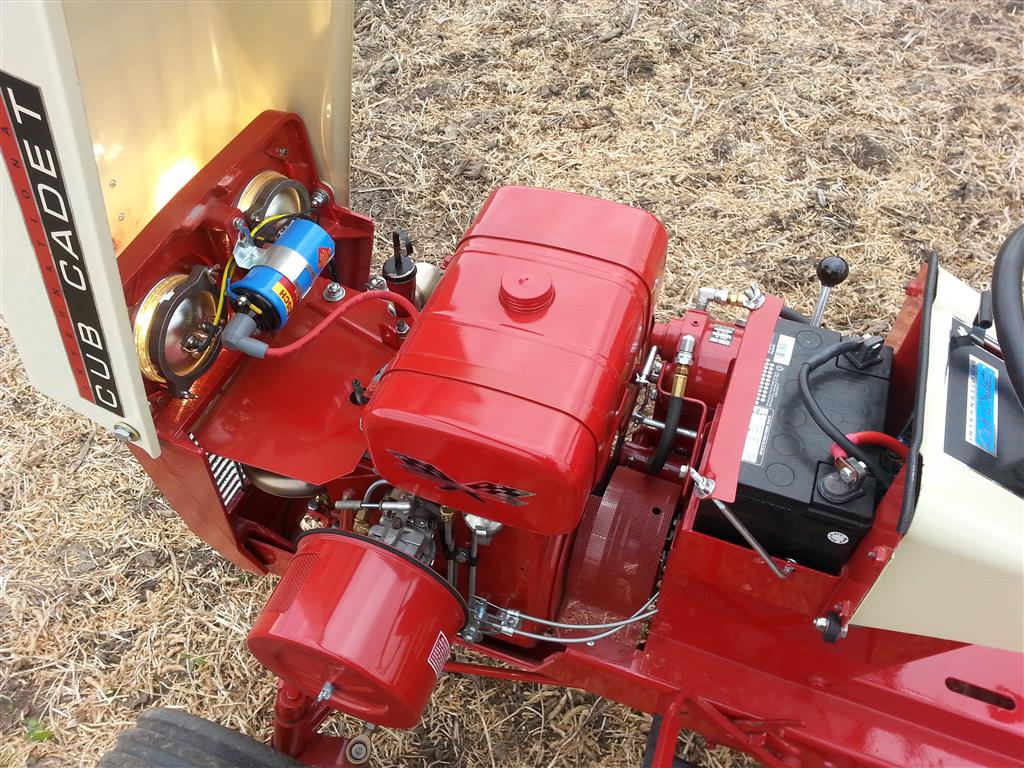 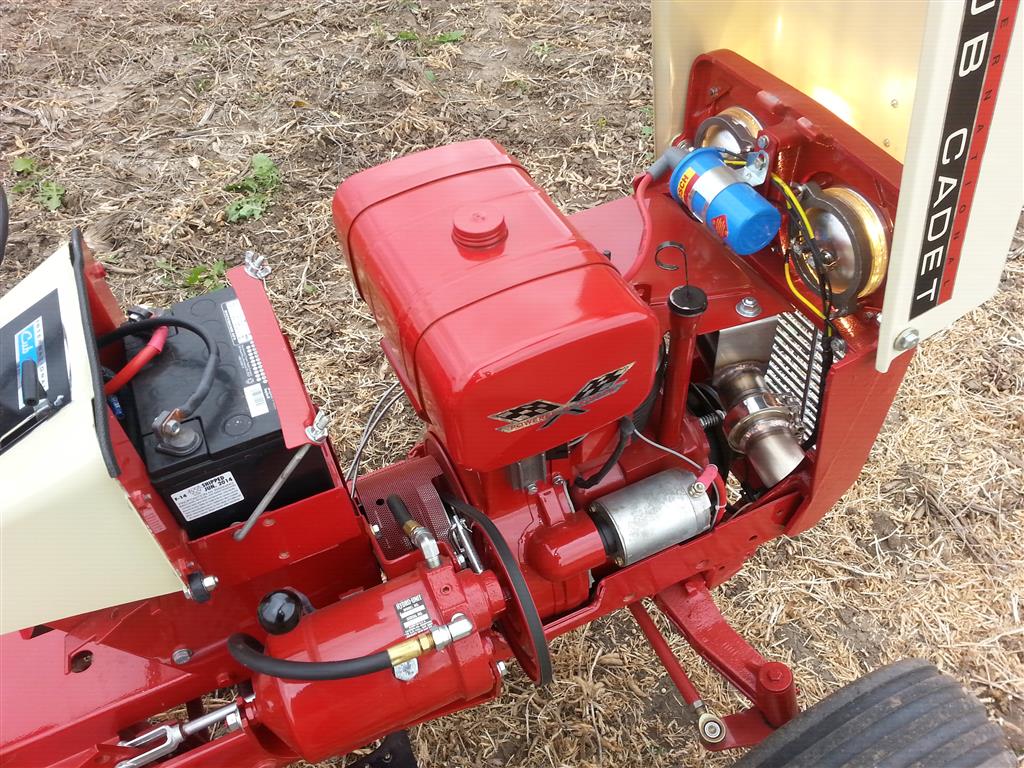 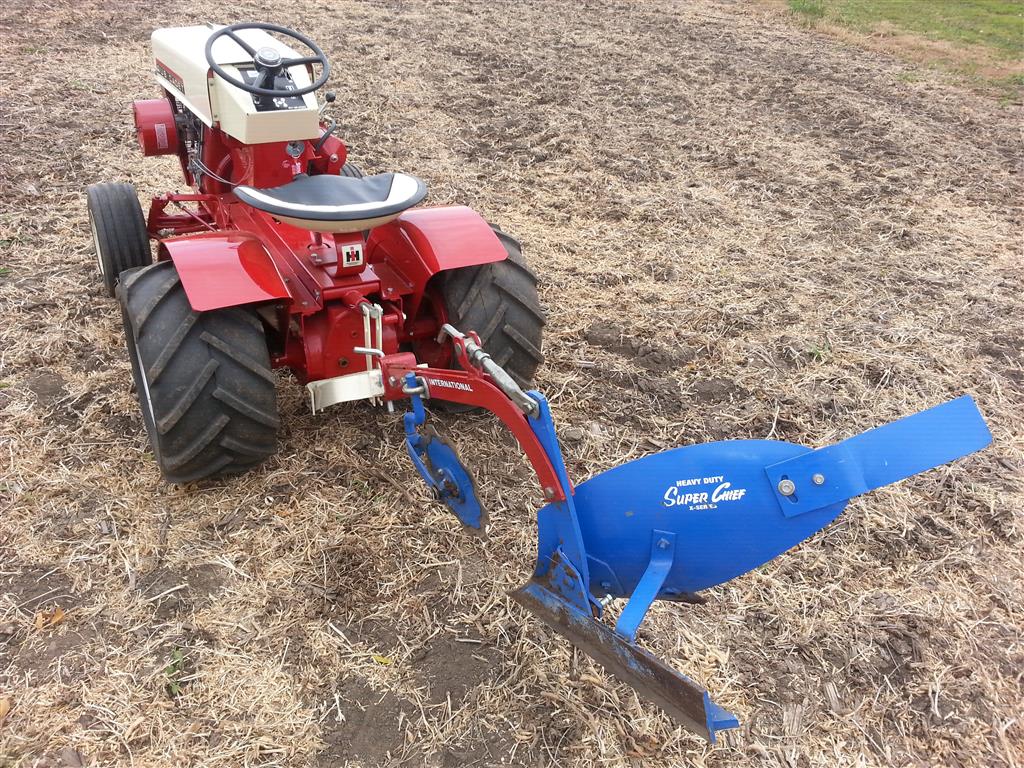
__________________
-Ryan
  |
|
#3
|
||||
|
||||
|
Congrats on potw Wyatt! Very sweet looking cub! You did a very good job on building it. I've never seen a cub so miticuliously done. The frame mod the custom fuel lines, all very professional! You can be proud of a job well done very fine machine you have there!
__________________
Brian April 1979 1200 Quietline 44A deck 1988 1211 customized into a 1288 with a K301AQS 38C deck and a 1864 54” deck . Snow blades 42" and 54" . Brinly disk, brinly plow a cultivator and a $5 brinly yard rake! 
|
|
#4
|
||||
|
||||
|
Congrats on POTW.
__________________
Allen Proud owner of my Original and 126! My Grandpa's Cart Craftsman Lawn Sweeper Craftsman Plug Aerator |
|
#5
|
||||
|
||||
|
Dang Wyatt!!! You've been holding out! I love it! Congrats on POTW!

__________________
Travis 1993 Cub Cadet 2064 1988 Cub Cadet 2072 1980 IH Cub Cadet 782 w/CH20 1966 IH Cub Cadet 102 w/K301 1961 IH Cub Cadet O 1967 IH Cub Cadet 102 & 122  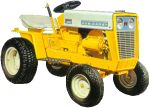 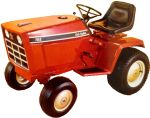 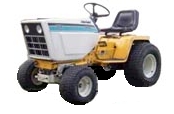 JD 2155 w/ 175 loader |
|
#6
|
||||
|
||||
|
Very nice, and congrats on POTW

__________________
Make the best of each day , Todd  Original's Face Lift thread.http://www.onlycubcadets.net/forum/s...ad.php?t=34439 (O) Start to Finish video.https://www.youtube.com/watch?v=GAoUNNiLwKs Wheel Around videohttps://www.youtube.com/watch?v=XUL-m6Bramk They can't all be turn key! 
|
|
#7
|
||||
|
||||
|
Awesome cub, it is very well thought out and put together beautifully! This is a POTW that will live in OCC infamy.
Bill |
|
#8
|
||||
|
||||
|
Very nice job and congrats on POTW!
|
|
#9
|
||||
|
||||
|
Wyatt
That is one of the nicest narrow frames I've ever seen! Congrats on POTW. Ryan Glad you decided to add the second post with the details. Good job Bud. 
__________________
2264 with 54 GT deck 1641 AKA Black Jack with a 402-E Haban Sickle bar mower JD317 dump truck BX2670 with FEL |
|
#10
|
||||
|
||||
|
Thats amazing

|
 |
|
|
Cub Cadet is a premium line of outdoor power equipment, established in 1961 as part of International Harvester. During the 1960s, IH initiated an entirely new line of lawn and garden equipment aimed at the owners rural homes with large yards and private gardens. There were a wide variety of Cub Cadet branded and after-market attachments available; including mowers, blades, snow blowers, front loaders, plows, carts, etc. Cub Cadet advertising at that time harped on their thorough testing by "boys - acknowledged by many as the world's worst destructive force!". Cub Cadets became known for their dependability and rugged construction.
MTD Products, Inc. of Cleveland, Ohio purchased the Cub Cadet brand from International Harvester in 1981. Cub Cadet was held as a wholly owned subsidiary for many years following this acquisition, which allowed them to operate independently. Recently, MTD has taken a more aggressive role and integrated Cub Cadet into its other lines of power equipment.
This website and forum are not affiliated with or sponsored by MTD Products Inc, which owns the CUB CADET trademarks. It is not an official MTD Products Inc, website, and MTD Products Inc, is not responsible for any of its content. The official MTD Products Inc, website can be found at: http://www.mtdproducts.com. The information and opinions expressed on this website are the responsibility of the website's owner and/or it's members, and do not represent the opinions of MTD Products Inc. IH, INTERNATIONAL HARVESTER are registered trademark of CNH America LLC
All material, images, and graphics from this site are the property of www.onlycubcadets.net. Any unauthorized use, reproductions, or duplications are prohibited unless solely expressed in writing.
Cub Cadet, Cub, Cadet, IH, MTD, Parts, Tractors, Tractor, International Harvester, Lawn, Garden, Lawn Mower, Kohler, garden tractor equipment, lawn garden tractors, antique garden tractors, garden tractor, PTO, parts, online, Original, 70, 71, 72, 73, 76, SO76, 80, 81, 86, 100, 102, 104, 105, 106, 107, 108,109, 122, 123, 124, 125, 126, 127, 128, 129, 147, 149, 169, 182, 282, 382, 482, 580, 582, 582 Special, 680, 682, 782, 782D, 784, 800, 805, 882, 982, 984, 986, 1000, 1015, 1100, 1105, 1110, 1200, 1250, 1282, 1450, 1512, 1604, 1605, 1606, 1610, 1615, 1620, 1650, 1710, 1711, 1712, 1806, 1810, 1811, 1812, 1912, 1914.